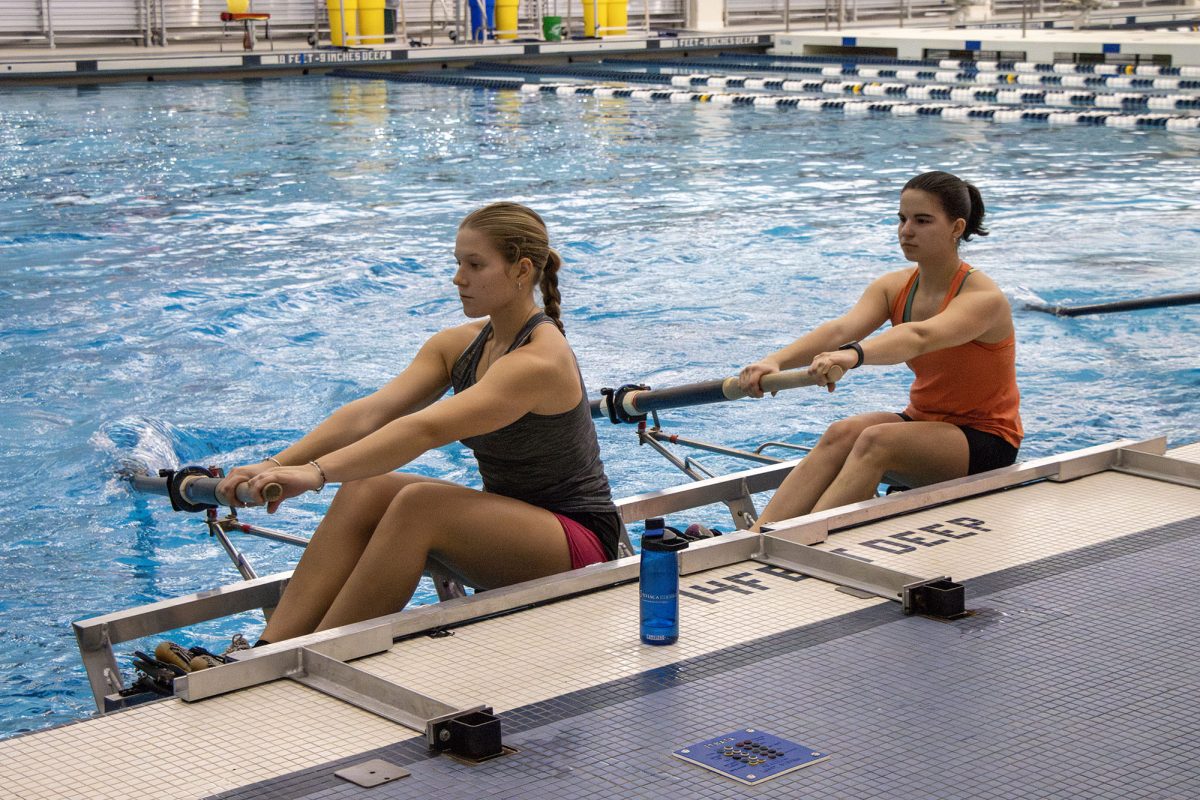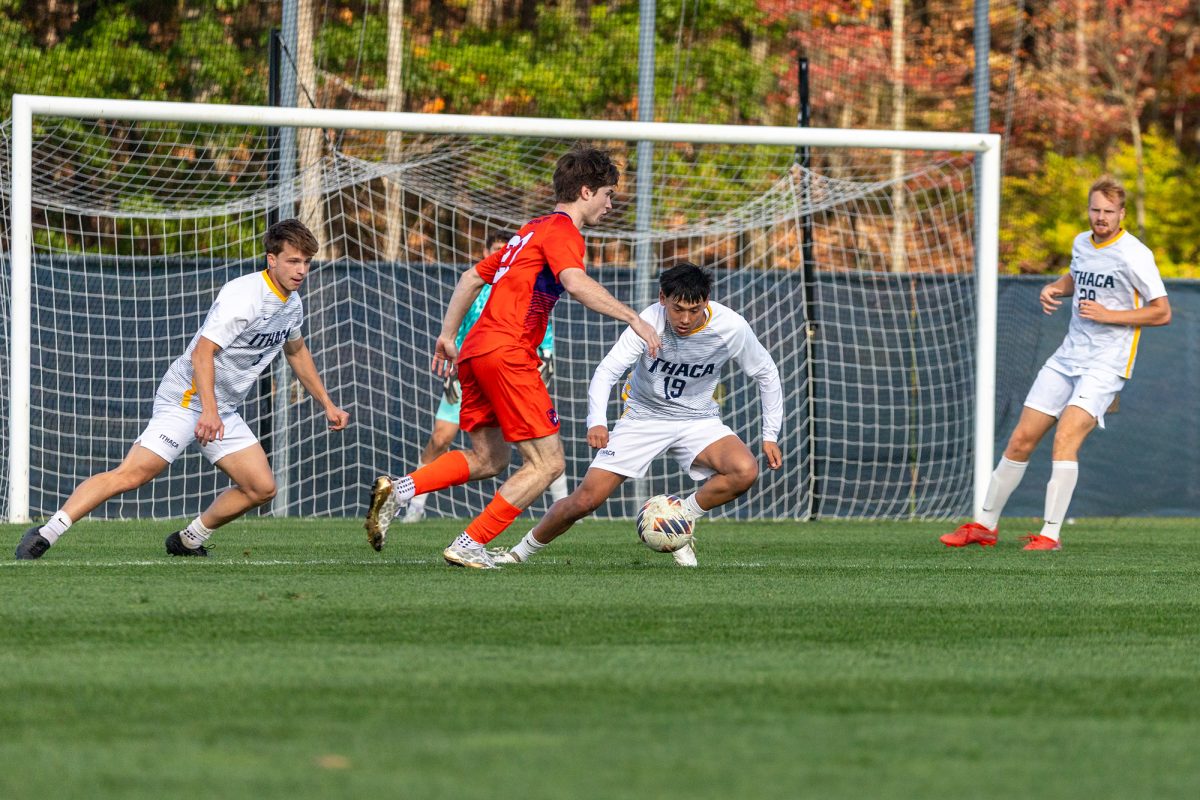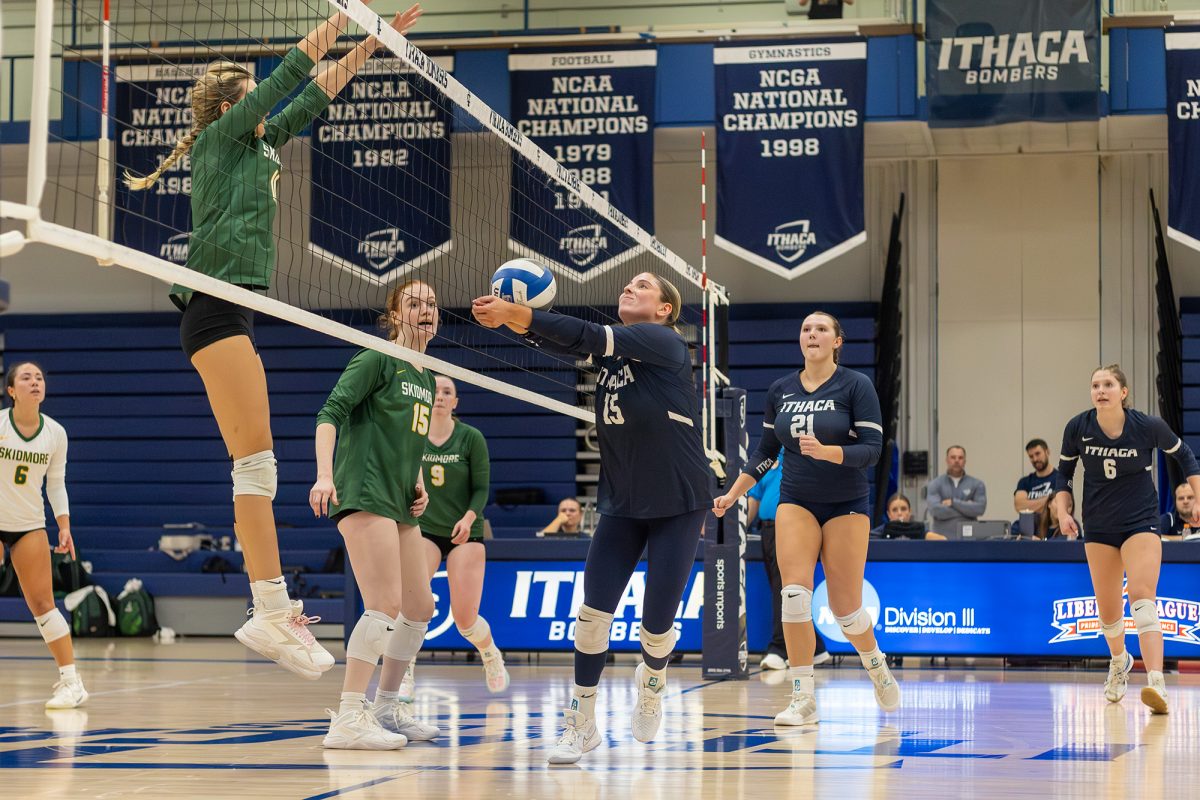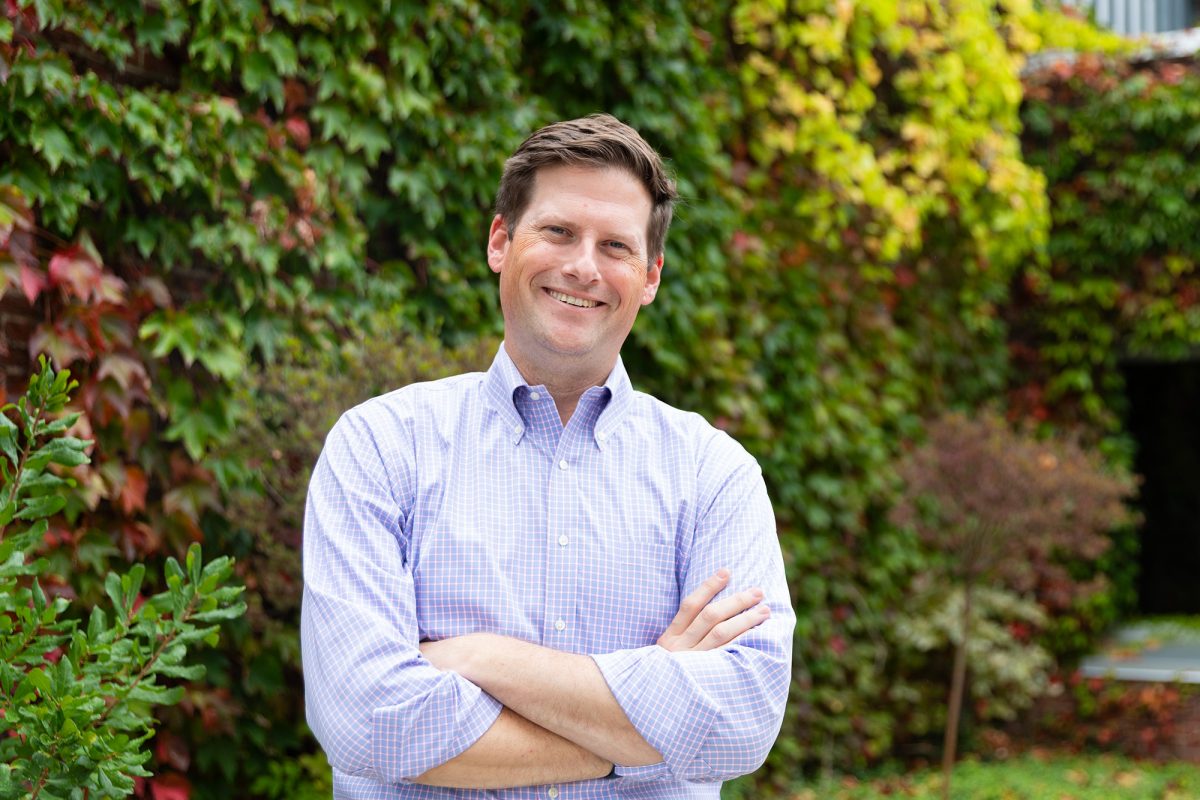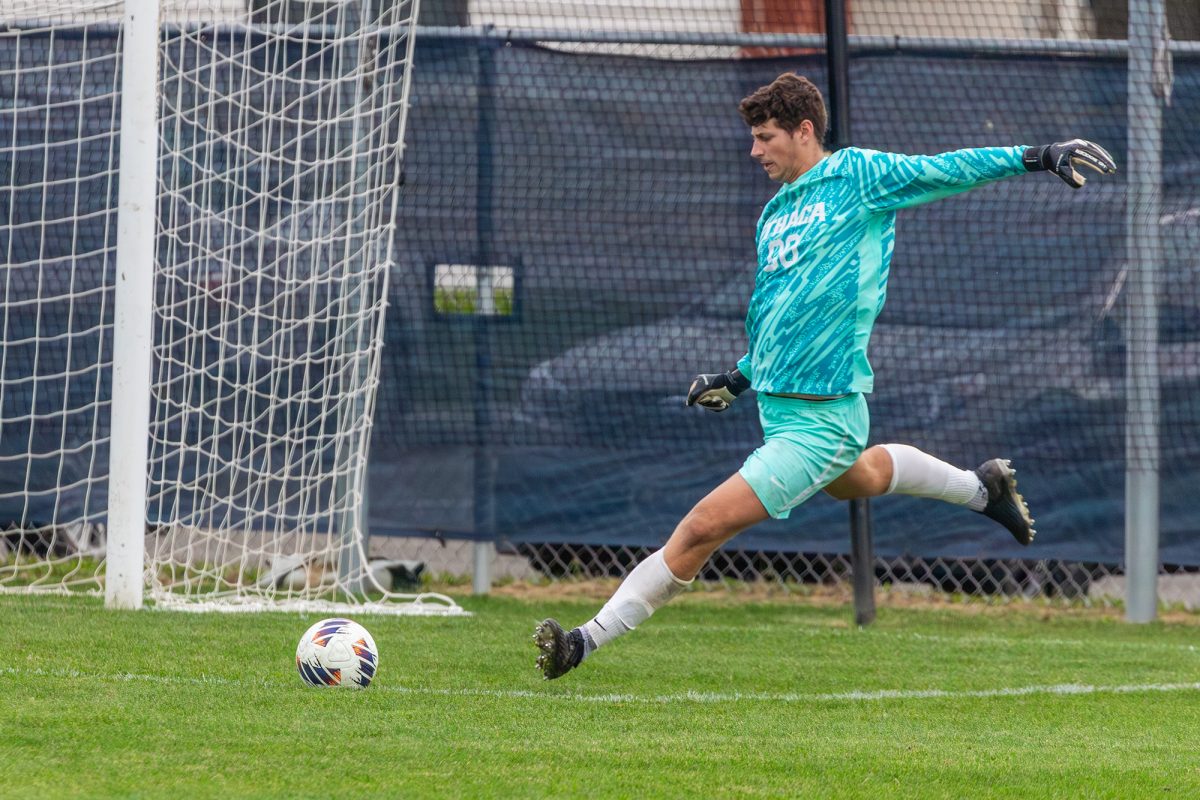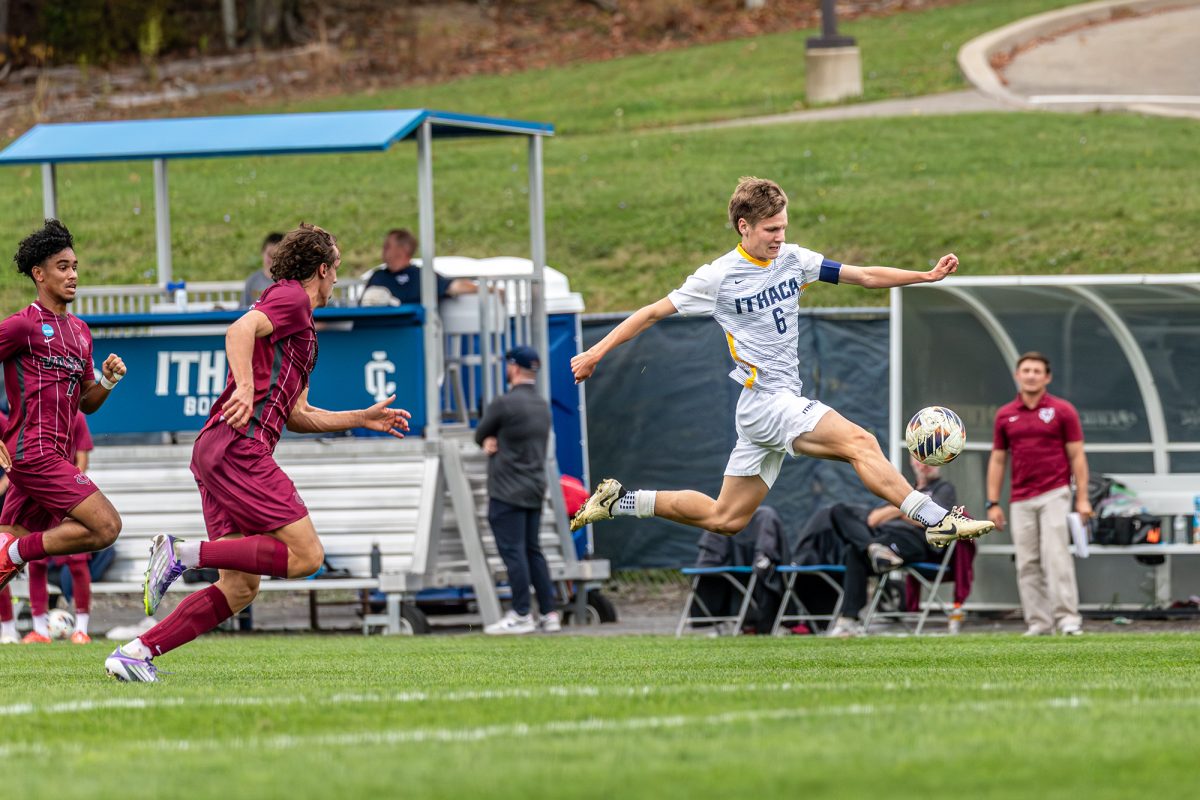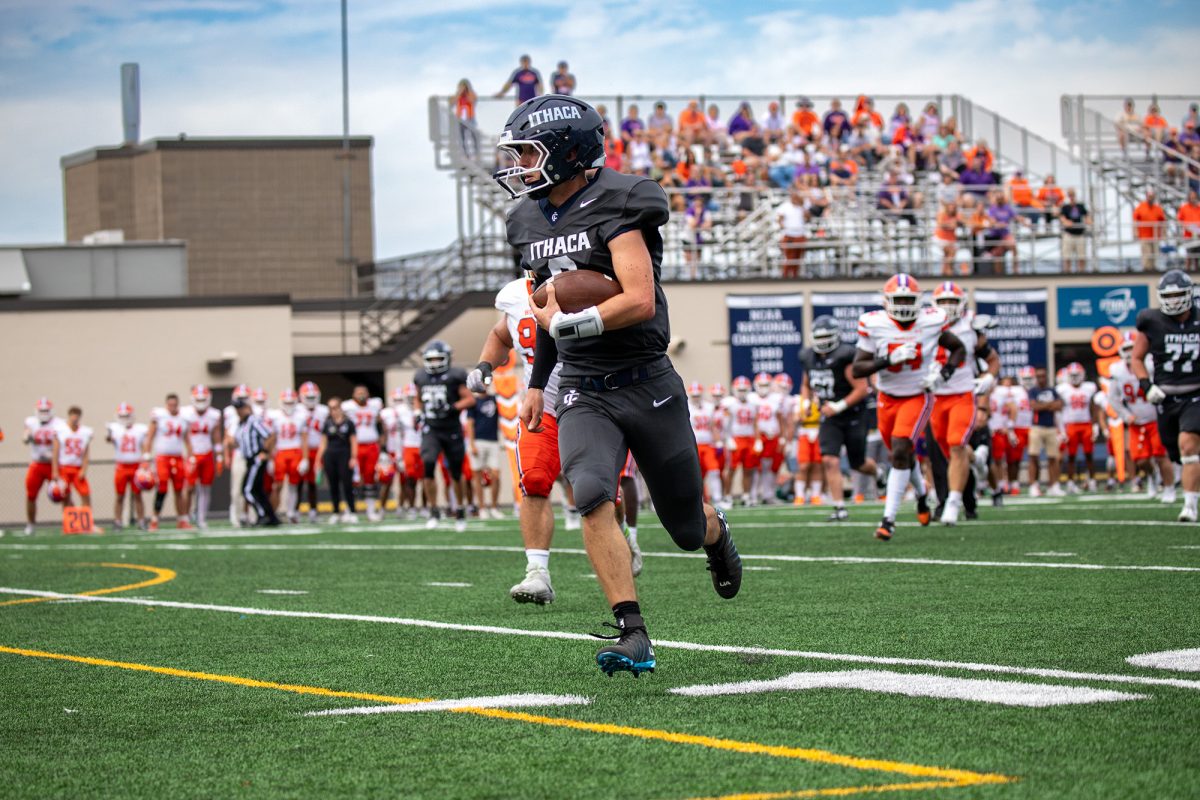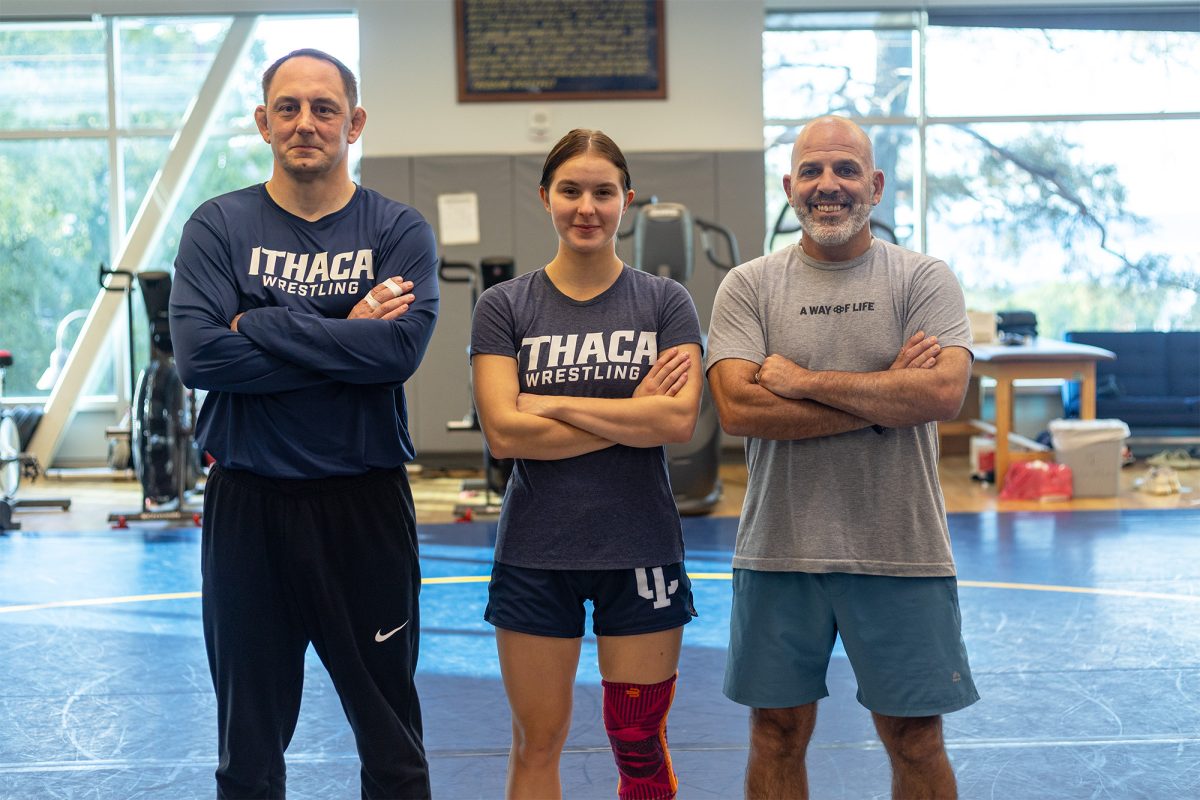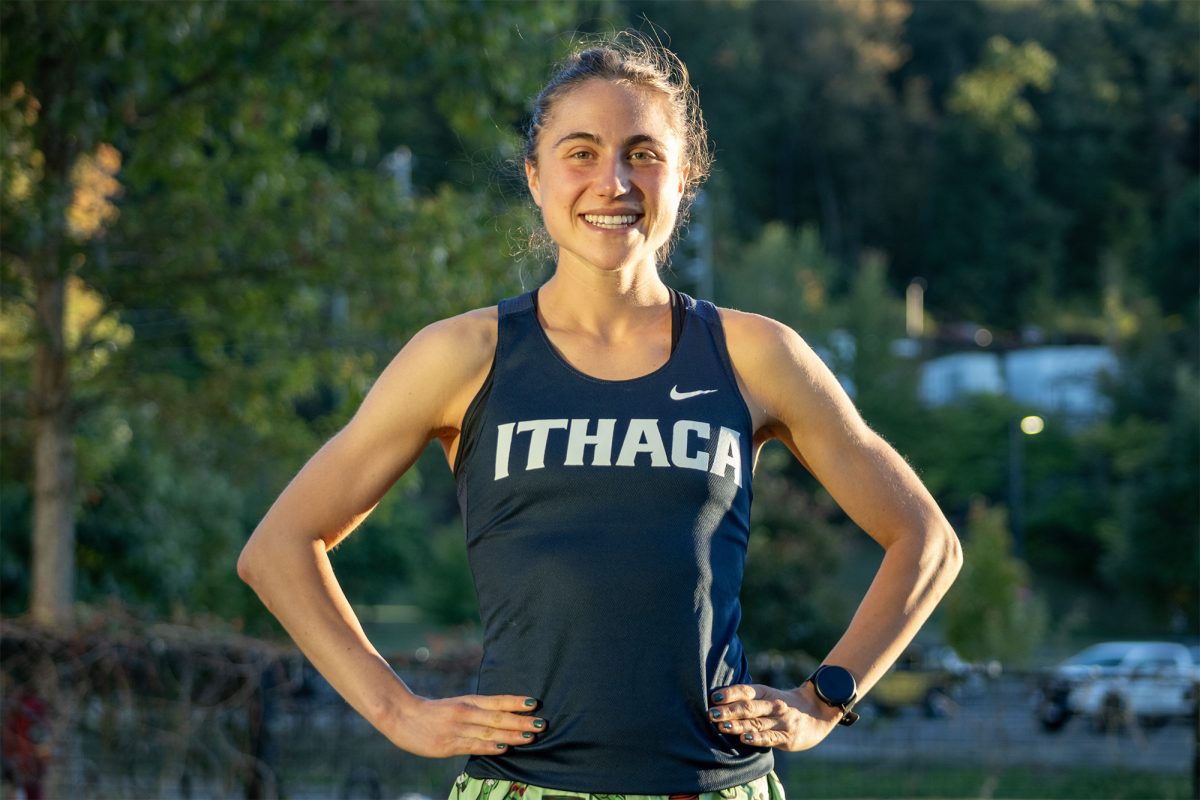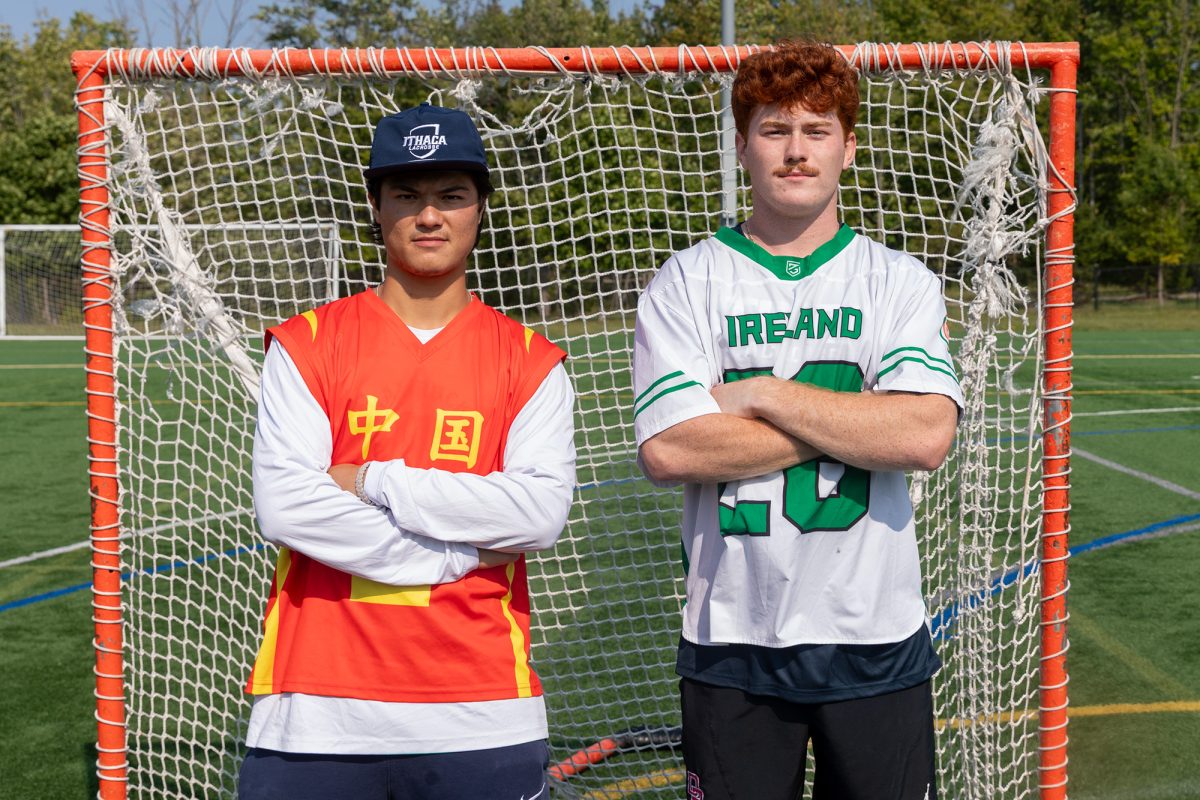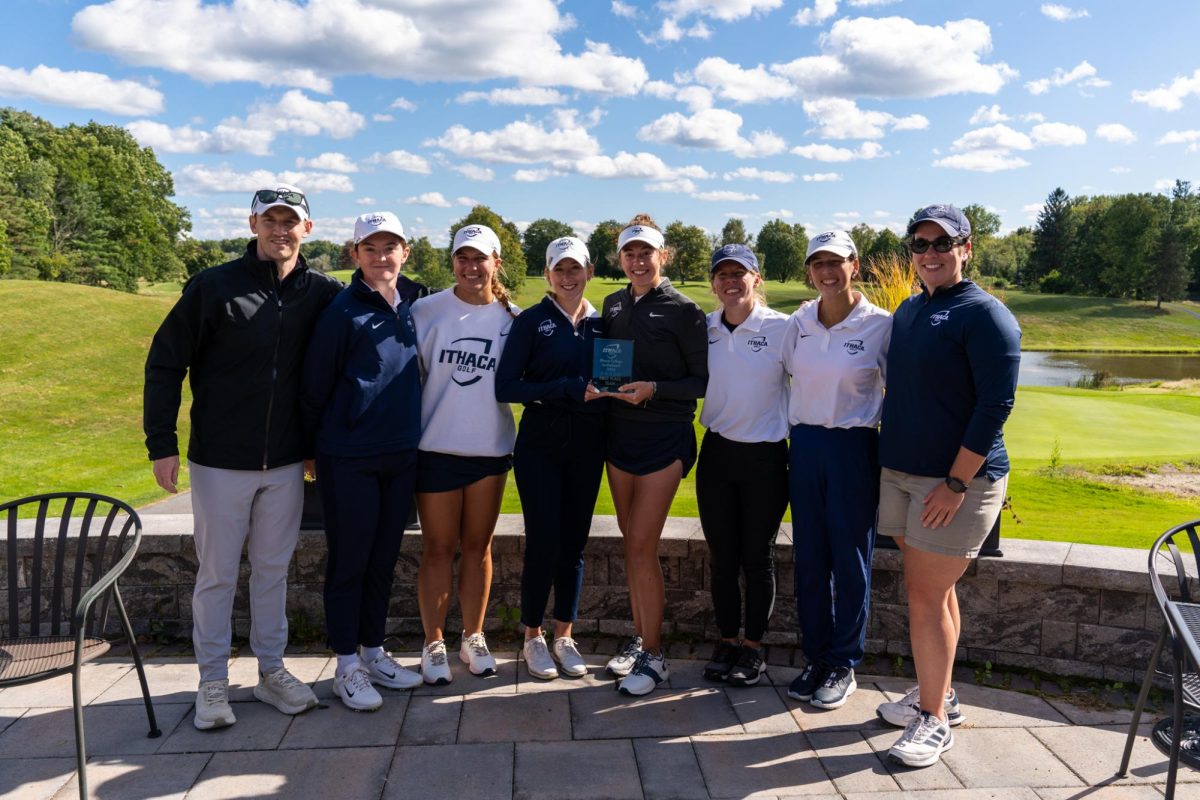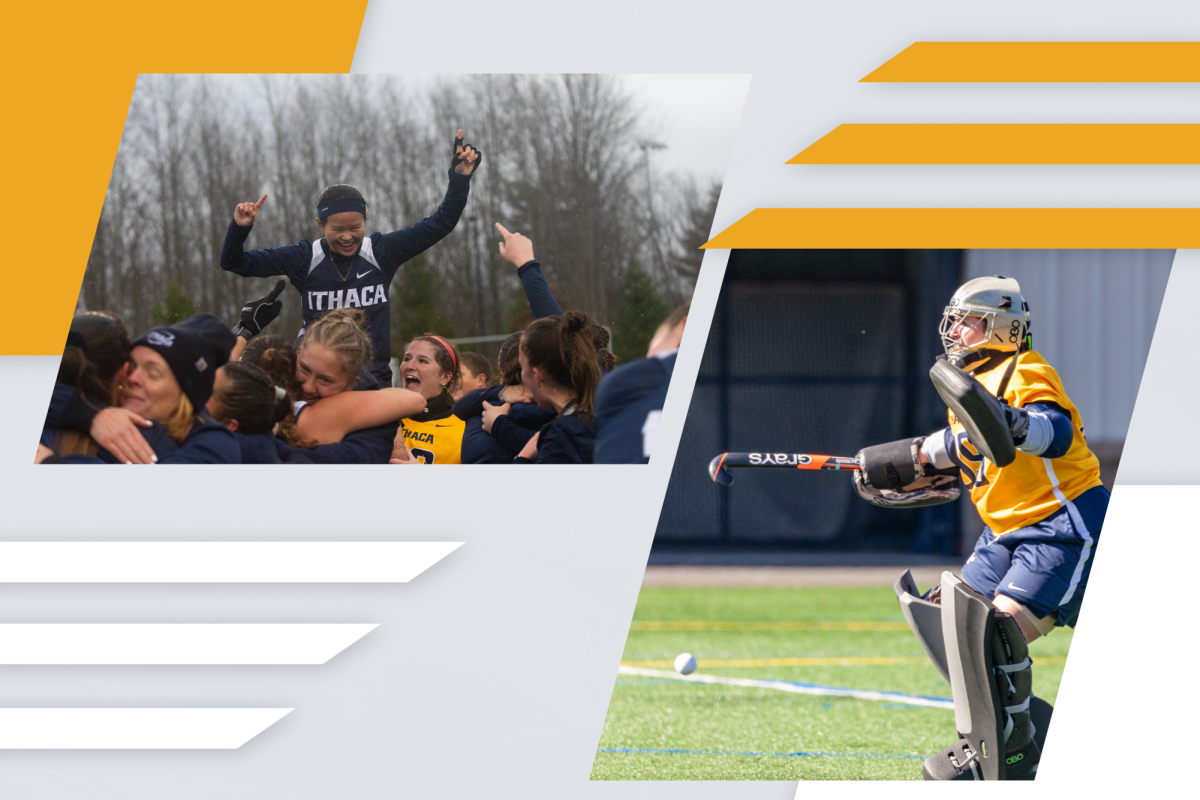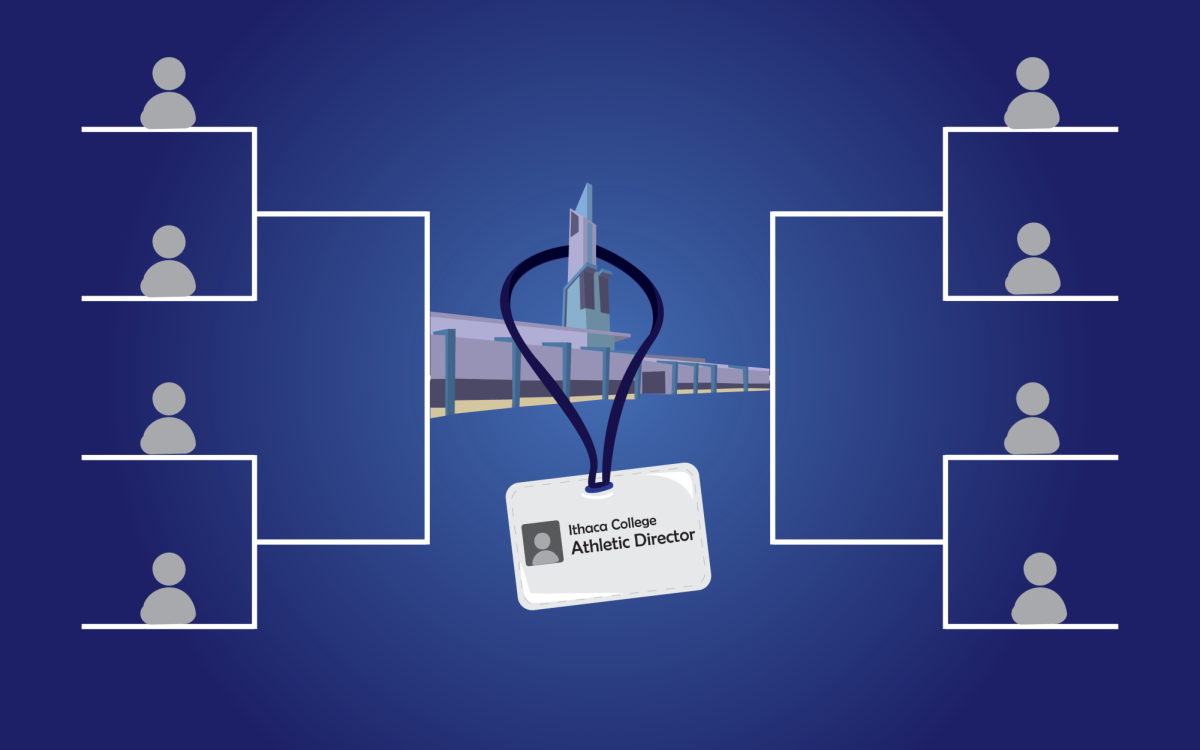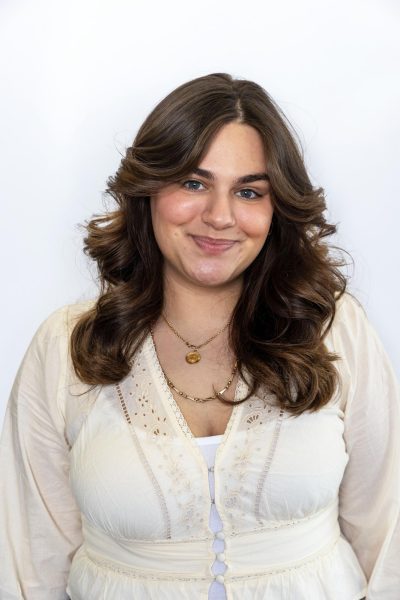Winter on South Hill can bring below-freezing temperatures and poor weather conditions, leading to a frozen Cayuga Lake, impossible to launch a boat onto. For the Ithaca College rowing teams, the task of training outside of the water is a long process, but a path that the teams are willing to take each season to reach the highest levels of success.
Over the past few seasons, the teams have consistently finished at the top of the Liberty League Championship Tournament. Beth Greene ʼ00, head coach of the women’s rowing team, said that keeping the fundamentals and the team’s training consistent keeps the athletes engaged and motivated.
“Some days, it’s like, ‘Ok, sit here and take more strokes,’” Greene said. “We’re giving them the reminder of how what they’re doing today is going to pay off in a few months. … I think that that’s the key, is to try to make a connection between monotonous training and their future success.”
The women’s team is coming off its sixth consecutive Liberty League Championship, as well as a fifth-place team finish at the NCAA DIII rowing championship.
The men’s team is fresh off its first ever Liberty League Championship under head coach Justin Stangel in 2024. He said the two teams have consistently worked closely with one another to balance each other’s training loads and often conduct joint workouts because the success often rubs off on each team.
“We’re fortunate enough to have the rowing machines [in the Athletics and Events Center] and at the boathouse,” Stangel said. “Honestly, getting 114 days instead of weeks has been nice. We’ve been able to draw out the season a little bit more so we get a couple more touchpoints, and [we are] really continuing to build off the foundation that we set in the fall.”
When the team is not in the boat, it is working individually on rowing machines. Stangel said that training out of the boat allows him to check in with each athlete on their strength and help them work on their form.
“I really think that the rowing machine is a great tool,” Stangel said. “When we’re in the boats, there’s nine people in boats, eight rowers and the coxswain. I can’t individualize what those guys are doing. It gives me a little bit more opportunity to tweak where people are at.”
Outside of the physical training leading up to the season, both teams emphasized the mental preparation that takes place during the offseason. Graduate student Wesley Hoglin worked under previous head coach Dan Robinson ‘79 during his first two seasons with the team in 2021 and 2022. He said the team’s approach toward training has changed since Stangel took over the program because Robinson’s training regiment was more intense during Hoglin’s second season.
“Coach likes to say ‘We ride the lightning’ when we’re working hard,” Hoglin said. “When your muscles are screaming, when your lungs are screaming, like halfway through a piece, you just have to keep holding it and trust your fitness.”
Hoglin said there is no difference in the physical feeling of being on the water compared to erging, but that the balance is different.
“When you’re on the water, you are working with eight other guys to help keep the boat as set,” Hoglin said. “The second you tip to port or starboard side, that can affect your speed.”
Greene said she emphasizes to her athletes the idea of visually preparing for the season, focusing on what they want to gain each practice and competition.
“Sometimes that looks like learning how to listen to your own thoughts without having to believe them,” Greene said. “We’ve talked a lot about identifying which thoughts are useful to you and which ones aren’t, and that your mentality is something that can be practiced the same way that your physical skills can.
Senior Lily Babcock is one of the athletes on the team in the varsity eight who competed at nationals in 2024. She emphasized the team’s use of the erg machine, a rowing machine designed for rowers to work on their form outside of the boat. Babcock said this is how the team locks in and helps them stay on course for later in the season.
“I feel like this is the time that’s really preparing us for being on the water,” Babcock said. “We’re building our fitness every single day, and once we get on the water, we’re still working.”
Hoglin emphasized the mental side of training while out of the water. He said the team’s work ethic and mindset are enough to carry them into the season.
“When we’re in winter training, it’s really nice to have those guys on the left and right of you who you know are going through the same thing you’re going through, so you’re able to pick yourself up off of them, lean on them a little bit,” Hoglin said.
He said the captains bring a welcoming environment to practice when the team is not officially in season by inviting everyone to work out together.
“I think sometimes erging can be a love-hate relationship, because it’s hard [when] you’re by yourself,” Hoglin said. “In a boat, you know that everyone’s working together.”
Hoglin said the erg machines have screens that provide the statistics — including strokes per minute and distance — that are only provided on the boat in intervals.
“It’s psychologically different, because on the water, the coxswain has all that data, and so we don’t know how we’re doing,” Hoglin said. “There’s a level of unknown, just mental[ly] keep pushing until we hear a number, and then keep pushing more.”
Despite its challenges, Stangel said that training outside of the boats for long periods of time, such as during the winter, is the best way to fully prepare the team for the upcoming season.
“It takes a little bit of time to knock the rust off, but that’s part of the fun [and] the challenge of coaching in northern school,” Stangel said. “It’s definitely a challenge, but one that we’re always up for.”


